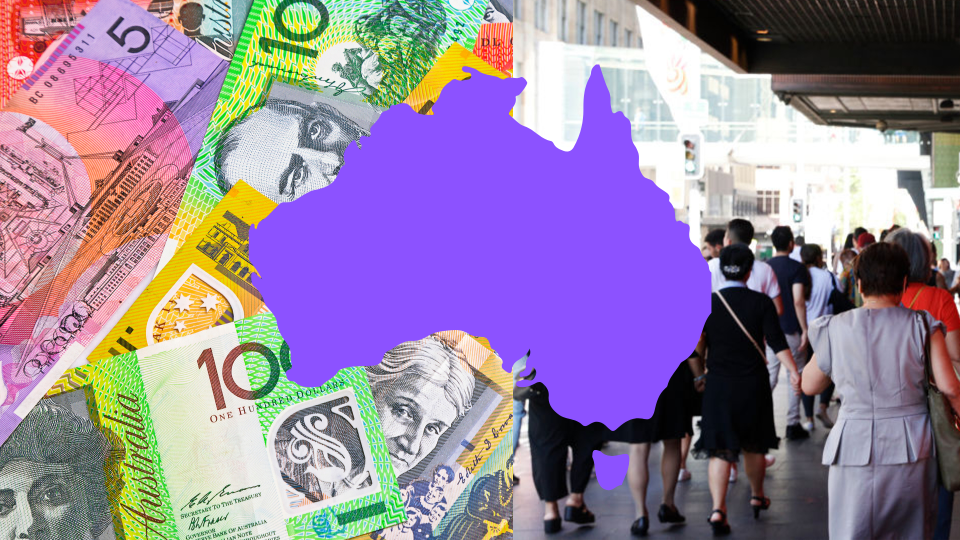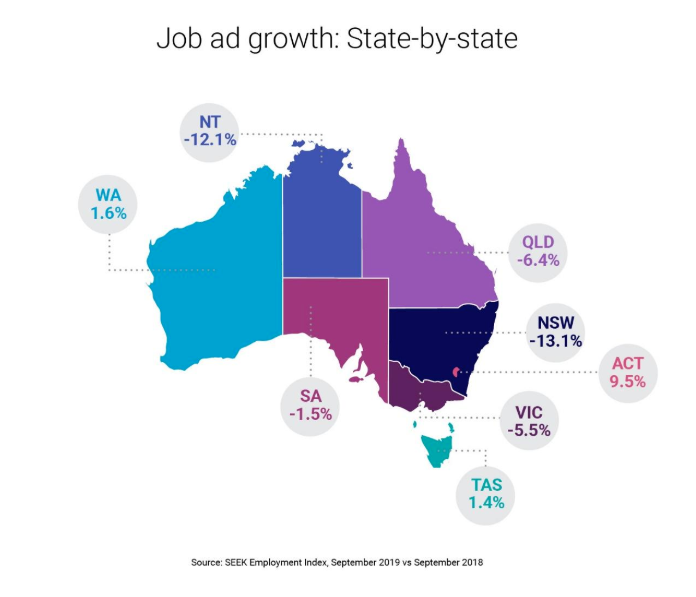Here’s how much other people in your state earn

The average advertised Australian salary was up 2.5 per cent to $88,652 year-on-year, the latest SEEK employment report has revealed.
Jobs in Western Australia had the highest average advertised salary ($90,930), followed by those in NSW ($90,422) – both increases fuelled by the mining, resources, construction and energy sectors.
Related story: How much do Aussies your age have in savings?
Related story: How much should I have in my superannuation by now?
Related story: How much do you need to live comfortably in each Aussie capital?
But Australians living in Tasmania would see jobs with the lowest average advertised salary: $80,407 – although this does represent an increase of 6.2 per cent over the last year.
Average salary across Australia’s states

And while job ad growth plummeted by 13.1 per cent in NSW and 12.1 per cent in the Northern Territory, it surged 9.5 per cent in the ACT and 1.6 per cent in WA.
“We are seeing a slight improvement in the market with the rate of job ad decline moderating, with September at -7.4 per cent compared to August, which was -8.6 per cent,” said Kendra Banks, managing director, SEEK ANZ
“Month to month we continue to see growth come from the large employing sectors of community services and development which has seen a jump from 13 per cent y/y in August to 18.5 per cent in September. Over the same period healthcare and medical jumped from 4.6 per cent to 7.4 per cent.”
Increased demand for workers in child- and aged-care is a “common theme”, Banks said, with job ads increasing for childcare, secondary teaching, aged care nurses and aged and disability support.
Overall, job ads have fallen 7.4 per cent year on year.

The industries where no one is hiring
At the other end of the spectrum, ads for design and architecture roles have fallen a whopping 22.3 per cent, followed by roles in manufacturing, transport and logistics, down 15.6 per cent.
According to research from Invoice2go, interior design work is often the first to suffer when the Australian economy slides. In fact, the average amount invoiced by interior designers fell 22 per cent over the 2019 financial year to $96,809.
But real estate and property ads have also fallen by 13.7 per cent, while media roles have also slumped 13.2 per cent.
The figures come after the Australian Bureau of Statistics in September reported Australian Gross Domestic Product was just 0.5 per cent in the June quarter, bringing 2019 financial year growth to 1.4 per cent - lower than the 1.7 per cent growth in 2009.
Make your money work with Yahoo Finance’s daily newsletter. Sign up here and stay on top of the latest money, news and tech news.

 Yahoo Finance
Yahoo Finance 
